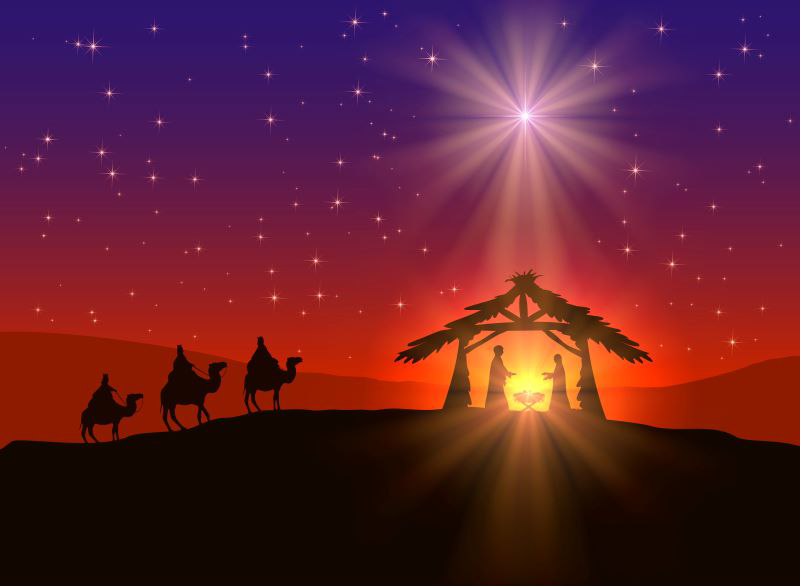Only Jesus Can Set Things Right
Sign up for a six month free
trial of The Stand Magazine!
The book of the genealogy of Jesus Christ, the son of David, the son of Abraham (Matthew 1:1).
It’s not by accident that Matthew’s gospel is the first of four in the New Testament. This is by design.
The book of Matthew—as the first book of the New Testament—is intended to parallel the book of Genesis—the first book of the Old Testament. We see this in the very first verse of Matthew, which reads, “The book of the genealogy of Jesus Christ, the son of David, the son of Abraham.”
The key word in this verse that links Matthew to Genesis is genealogy. This word is a linking term running through the book of Genesis. Victor Hamilton, in his masterful commentary on Genesis, writes this:
“Few books of Scripture reveal the lines of demarcation between their individual units as clearly as does Genesis. This is due to the presence of the formula ʾēlleh ṯôleḏôṯ, used ten times throughout Genesis.”[1]
This Hebrew phrase ʾēlleh ṯôleḏôṯ, is often translated “generations,” or “genealogies.” By using this term and by putting Jesus’ genealogy first, Matthew is whispering to us, “Do you remember Genesis?”
But what does Matthew have to do with Genesis? Isn’t Genesis that hard-to-understand Old Testament stuff that was thousands of years ago?
No! There is a reason that Genesis is the first book of the Old Testament and Matthew is the first book of the New Testament, which becomes clearer when taking into consideration what the two books are all about.
The book of Genesis is all about origins, which is what the word “genesis” means. Genesis recounts the origins of the creation, humanity, sin, the people of Israel in Abraham, and God’s great plan to set the creation right again. Genesis as a book is the first chapter in God’s creation redemption story.
When Matthew’s gospel begins with the genealogy of Jesus, the writer and compilers of the New Testament are telling readers that this story of Jesus is the continuation, or better yet the fulfillment of the story that began back in Genesis.
But how does this work?
A major turning point in the book of Genesis is when God cursed the serpent for leading humanity—God’s image-bearers—into sin. In cursing the serpent God said, “I will put enmity between you and the woman, and between your offspring and her offspring; he shall bruise your head, and you shall bruise his heel” (Gen 3:15; emphasis added).
This verse is known as the protoevangelium, a term which means the “first good news.” We can take this to mean the first mentioning of the Good News as it’s the first occurrence in the Bible that points to redemption from sin—the undoing of the serpent’s evil deed. As the serpent led innocent humanity—God’s image-bearers—into a state of slavery to sin—so the offspring of Eve will break the bonds of that slavery and set things back to right.
As the story in Genesis unfolds after this turning point in Genesis 3, readers anticipate the fulfillment of this promise that God will raise up an offspring of Eve who will crush the head of the serpent.
As we read about Isaac’s miraculous birth, we wonder, is this the one? The story continues and we realize that no, Isaac isn’t the one. Then comes along Jacob, and, once again, we disappointingly realize, this isn’t the guy either. The same thing.
Then Moses comes along and our hope that this is the guy spikes! Moses does, in fact, crush the head of the serpent as embodied in Egypt. Exodus from Egypt, while being a literal deliverance from slavery, also has a figurative meaning. Egypt, in the ancient world, personified death. The Egyptians were obsessed with death as is evidenced in the building of the pyramids and the sophisticated practice of mummification. Pair this with their oppression of the Israelites, and we have the perfect symbol of death.
As Moses makes a mockery of the Egyptian pantheon through the ten plagues and subsequently leads the Israelites through the Red Sea as the waters come crashing down upon the Egyptians thereby killing Egypt’s army and Pharaoh, the message is the serpent has been vanquished![2] As Israel emerges on the opposite banks of the Red Sea on dry ground it is evident: Yahweh, through Moses, has crushed the head of the serpent.
The only problem is that as Israel heads into the wilderness they immediately want to go back to Egypt! Turns out Egypt as an external force isn’t the problem. The problem is internal! The problem of sin persists in the desert. Coming out of Egypt by the hand of Moses did not set things back to right as was expected!
This results in readers desperately wondering, “If Moses isn’t the offspring who crushes the head of the serpent, who is?!”
As we read on through the rest of the story in the Old Testament there are glimmers of hope, but never does the One, the Messiah, appear. For a moment it seems as if David—the shepherd warrior from Bethlehem—is this offspring of Eve. And then, just when our hope reaches a climax, David commits adultery and murder. The rest of David’s story is all downhill as his family and kingdom eventually fall into ruins.
In the midst of that story, however, God renews his promise. Just as he told Eve that one will come to set things right, that one will come to lead humanity out of its enslavement to sin, he tells David the same. This time, however, the offspring will not only be Eve’s but also David’s.
Thus, when we read in Matthew 1:1, “The book of the genealogy of Jesus Christ, the son of David, the son of Abraham,” we know. We know that this is the one. This is one that we’ve been waiting for. This the one that God promised all the way back in Genesis 3:15. As Genesis launches the story of the creation, Matthew launches the story of the new creation. Genesis recounts the origins of humans, and Matthew the origins of the new humanity. Genesis recounts the origins of God’s people in Abraham, Matthew recounts the origins of God’s people in Jesus and the twelve.[3]
As we read through Scripture we encounter the stories of individuals that give us hope. We read the stories of Abraham, Isaac, Jacob, Joseph, Moses, Joshua, David, Solomon, and others, and we’re tempted to think this is the one we’ve been waiting for! This man will save us from our sin dilemma. Over and over again, however, we’re disappointed. Yes, these individuals alleviated the threat of external oppression, but not one of them solved the problem of the human heart turned inward on itself. Each of them vanquished an enemy, but none of them vanquished the enemy.
This resonates with our experience today. Occasionally a human leader comes along in the form of a religious leader or even a politician and we’re tempted to think, “This one will save us!” It’s a part of human nature to look to hope in those who are not God. The problem is every single time we are and will be, let down.
We must remember that salvation is not in Washington, D.C. Salvation is in Jesus alone. The problem isn’t an external problem, it’s an internal problem that only God can solve from the inside out. Only Jesus, through the Holy Spirit, can get on the inside and start a new creation work.
The book of Matthew, by linking up to the book of Genesis is subtly telling us (as he will subtly tell us through the remainder of his Gospel) that this Jesus, and only this Jesus, is the one we’ve been waiting for. He will not disappoint. Put your hope in him. He will do something that he alone can do. He will bring a peace that no one else can bring. He will bring a joy that no one else can bring. He will bring victory over that old serpent who constantly turns us inward. He and he alone can crush the head of the sea monster Leviathan.
Only Jesus can set things right.
[1] Victor P. Hamilton, The Book of Genesis, Chapters 1–17, The New International Commentary on the Old Testament (Grand Rapids, MI: Wm. B. Eerdmans Publishing Co., 1990), 2.
[2] God’s control over the Red Sea is also a lesson in God vanquishing the serpent as the serpent in other parts of scripture is represented in a sea dragon known as Leviathan (Job 3:8, 40:5–41:26, Psalm 74:14, Psalm 104:26, and Isaiah 27:1).
[3] This does not mean that the church replaces what was started through Abraham in the Old Testament. This cannot be because Jesus and the twelve are all Jewish. This means that this “new people of God in Jesus” does not replace but fulfills what began in the Old Testament.
(Editor's Note: This blog was posted first on Dr. Ayars' blog site HERE)

Sign up for a free six-month trial of
The Stand Magazine!
Sign up for free to receive notable blogs delivered to your email weekly.



















